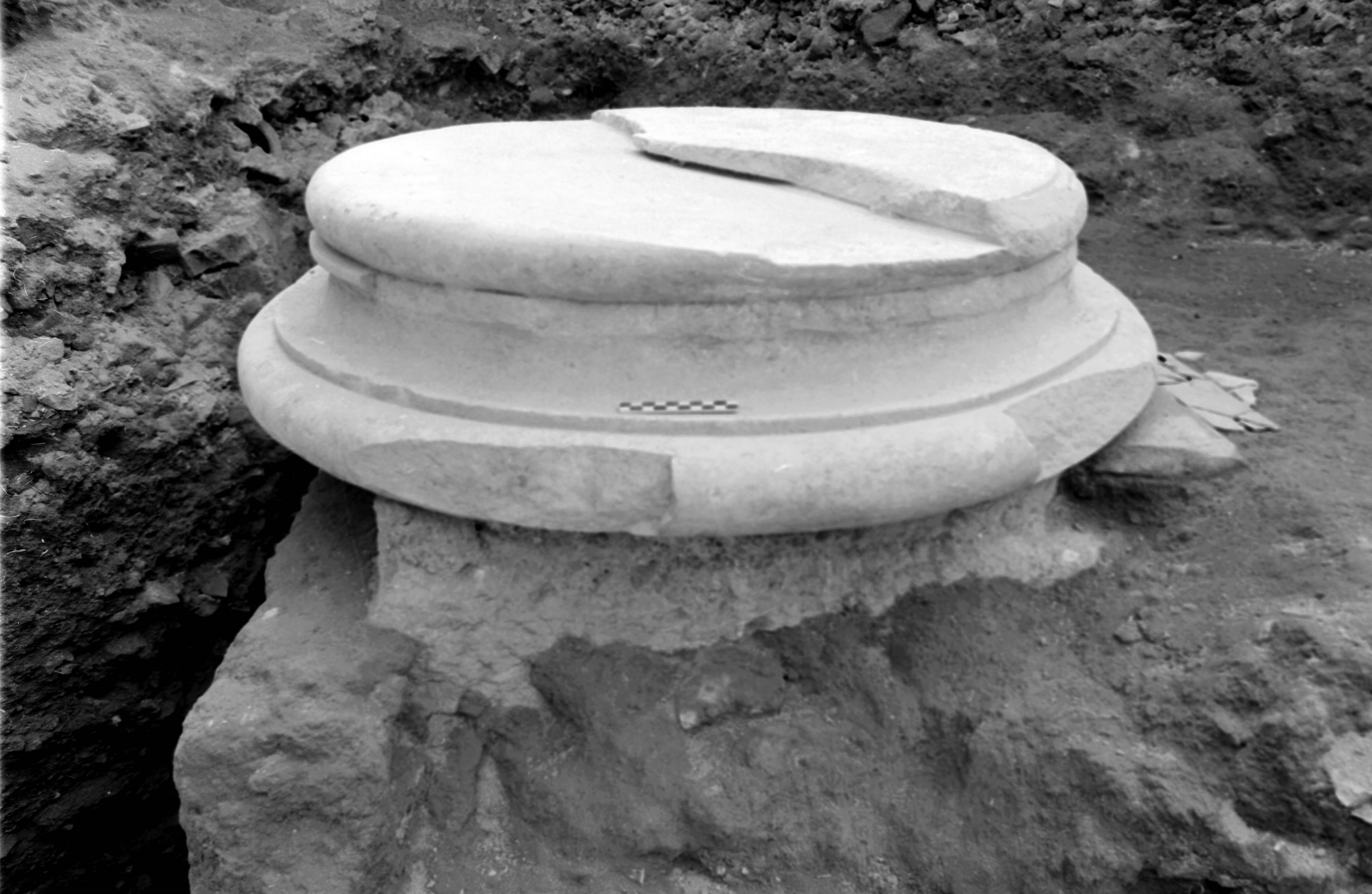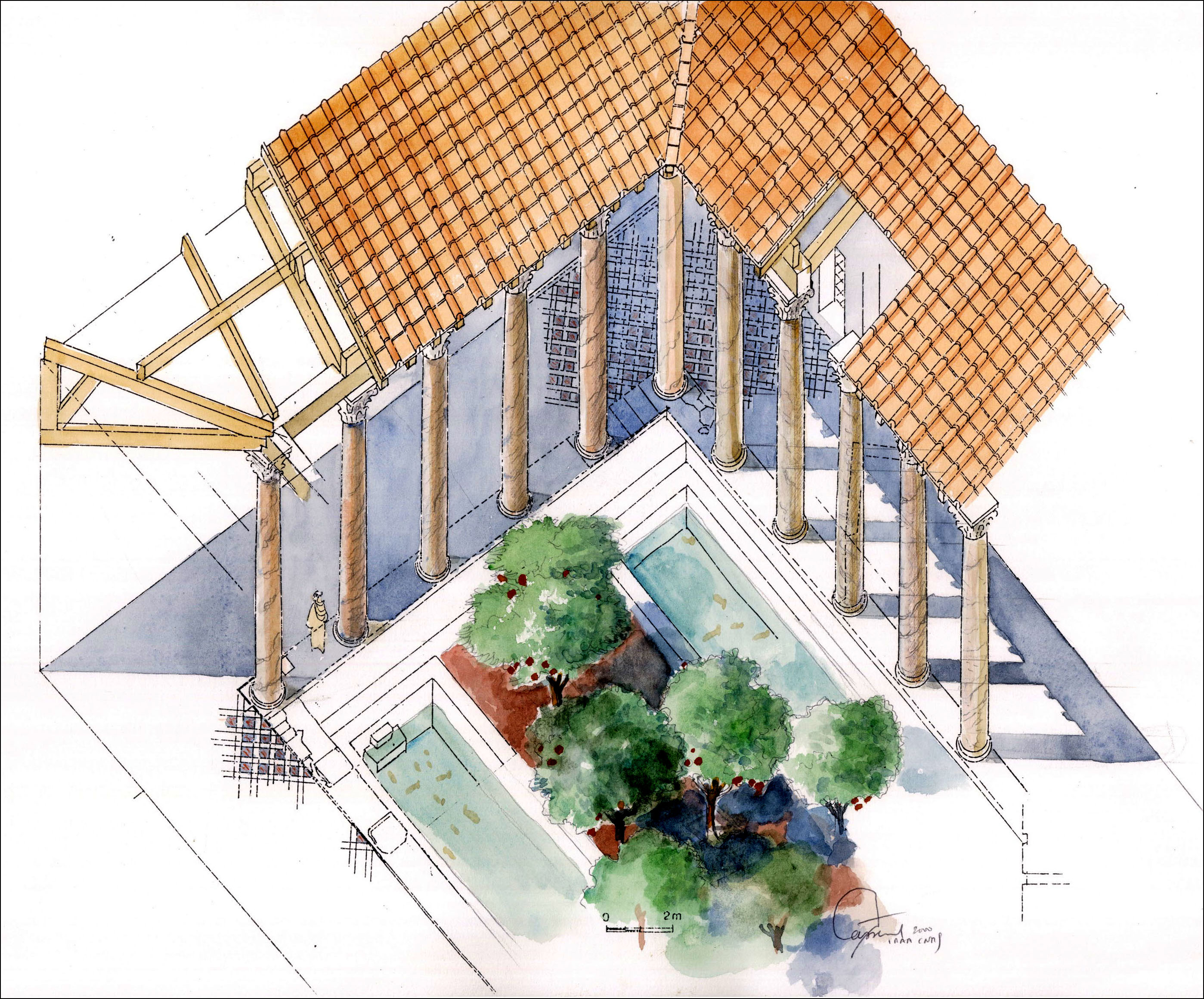The Garden of the Julio-Claudian Domus
Province
Italia
Italia (Pleiades)
Italia, Regio I (Pleiades)
Location
Sublocation
Palatine
Mons Palatinus (Pleiades)
Garden
Garden of the Peristyle of the Julio-Claudian Domus, Palatine
Keywords
- brick (construction material)
- colonnade
- column (architectural element)
- domus
- flower garden
- flowerpot
- fresco (visual work)
- marble (decorative element)
- mosaic (visual work)
- peristyle (Roman courtyard)
- princeps
- terracotta (architectural)
Garden Description
At the end of the Republican era and the beginning of the Empire, residential dwellings occupied, at least in part, the northeastern corner of the Palatine. Two distinct excavation areas have revealed the partial remains of one or more domus in the southern part of the terrace, some 6.5 meters below the present ground level. The two excavated sections have not been joined because of a wide road of Severan date that divides them. It is not possible, therefore, to ascertain whether the pre-Domitianic remains, on either side of this road, belong to a single domus. It is clear, however, the remains all share several features: obliqueness with respect to the later platform, building materials and techniques, and a luxurious quality.
The most coherent remains belong to the northwest corner of a peristyle oriented WSW-ENE. Enough is preserved to show that this was a rectangular peristyle with six columns along the west, and more along the north side, which is not fully uncovered. Remaining are the foundations of the colonnade, two column bases, and several important sections of the peripheral walls (Fig. 1). In addition, several marble paving slabs were found in place. Impressions of others, the result of the removal of slabs in antiquity in preparation for a layer of simple pozzolana, reveal the original pattern. The slabs were cut into squares and rectangles, based on a Roman foot or half-foot, from three different marbles: Chemtou (Giallo Antico), “Africano” and “Palombino (coming, respectively, from northwest Tunisia, the surroundings of Smyrna, and an unknown location). Set at a 45º angle with respect to the peristyle galleries, this pavement was limited on one side by the colonnade, and on the other by the back gallery walls, built with large blocks of tufa and limestone. Between the columns were white marble paving slabs with grooves, perhaps indicating they supported light barriers.
The garden area enclosed by the colonnade contained two basins, below the level of the peristyle, along the long sides (Fig. 2). While their lengths are not preserved, they are 2 meters wide and 1.50 meters deep. The edges were faced in white marble, but the basins had a covering of thick plaster, painted with two layers of light blue (caeruleum and Alexandrian frit). The short end of the south basin has two small steps painted blue, but these were later covered in marble. Although the excavations uncovered only a small section of the garden, a flowerbed, framed by triangular bricks, and fragments of flowerpots were brought to light.
An Augustan date is appropriate for some architectural and decorative elements, such as the peristyle column bases without plinths, fragments of architectural terracottas, and frescoes found in situ or gathered from the layer of earth rubble that buried the domus. Other elements, however, such as a floor mosaic or fragments from an ornamental wall mosaic could possibly date from slightly earlier periods. It seems likely that the Augustan dwelling (or dwellings) incorporated an earlier structure dating to perhaps the middle of the third quarter of the first century BCE. Because most of the decorative elements reflect the style of the Augustan villa and the contemporary Temple of Apollo on the Palatine, it is likely this domus was linked to the imperial court, or at least drew inspiration from the new artistic trends made fashionable by the first princeps.
The domus of the Vigna Barberini was included in Nero's Domus Aurea, and featured the coenatio rotunda, a revolving dining room built atop a tower that provided diners with a view across the landscape of Rome. The domus did not last beyond Nero’s principate, as attested by a cache of coins dating no later than 65 CE found in the destruction layer. Such destruction could have been the result of landslides caused by two earthquakes that struck Rome in June 68 (Suet. Nero, 48; Galba, 18). Once ruined, the domus was spoiled of most of its elements, the majority of which were dismantled and re-used.
OTHER PHASES OF THE VIGNA BARBERINI SITE:
Vigna Barberini
Garden of the Flavian Imperial Palace
Garden of the Temple of Elagabalus
Figures

Figure 1. Peristyle column marble base of the Julio-Claudian domus. Photograph from Villedieu et al, 2001, Figure 14.

Figure 2. Axonometric reconstruction of the domus peristyle (© J.-M. Gassend, AMU-CNRS, IRAA).
Dates
1st century BCE- 1st century CE
Bibliography
- J.-P Morel and F. Villedieu, “Le site de la Vigna Barberini à l’époque néronienne”, Actes du VIe congrès international Neronia VI, Rome à l’époque néronienne (Roma 19-23 Mai 1999). (worldcat)
- J.-P Morel, “Una ricca domus con giardino in età giulio-claudia” in F. Villedieu, ed., Il giardino dei Cesari, Exhibition catalogue (Rome, Museo Nazionale Romano, Terme di Diocleziano, Oct. 2001- Jan. 2002), Rome, 2001, pp. 33-43. (worldcat)
Pleiades ID
Contributor
Jean-Paul Morel
Françoise Villedieu
Publication date
17 April 2021